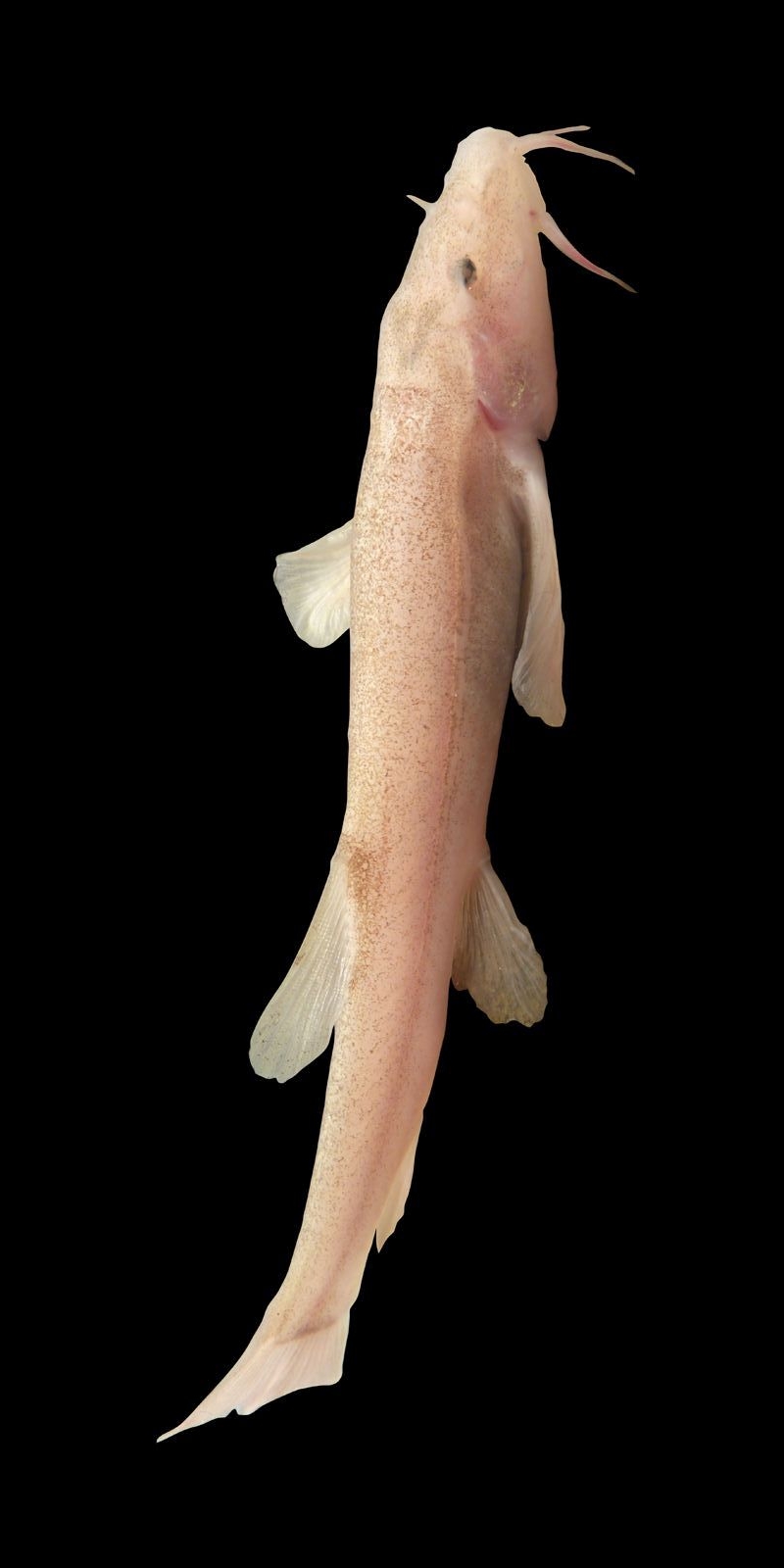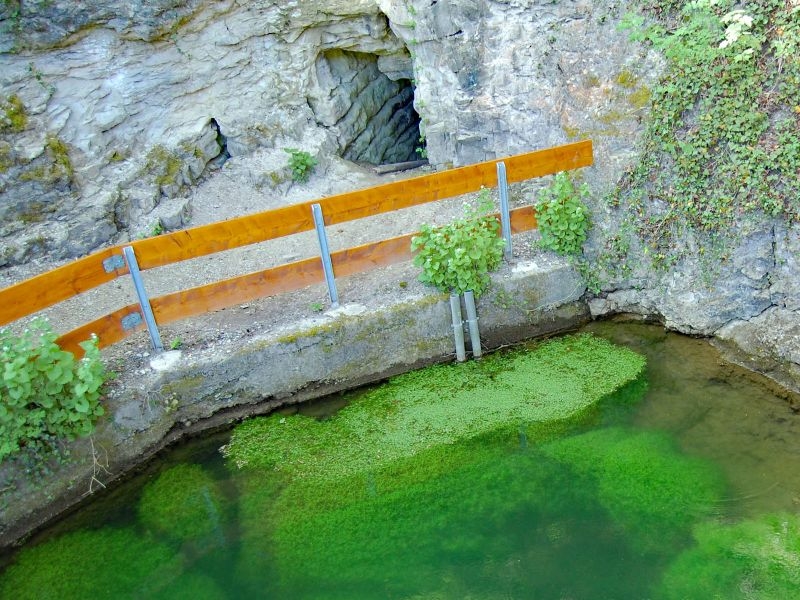Sensation in the Black Danube
The first cave fish in Europe
It was a real sensation! When the Aachfreunde cave divers suddenly discovered small fish in the water deep underground – in the subterranean, “black” Danube – during a dive in the Aach cave.
All the media reported on this sensational find in 2017!
Even the Tagesschau made a separate report and article about the find on April 3, 2017.
To the Tagesschau film report on April 3, 2017

What is a cavefish?
As the name suggests, a cavefish is a fish that lives in underground passages and water-filled caves. This does not actually exist in our regions in Europe, at most in the tropics. Or so it was thought.
But we have known for a few years now: There are cave fish under the Donaubergland and Hegau regions, small loaches.
Another natural wonder! And, again, it has something to do with the Danube seepage in the Donaubergland:
In the huge underground caves and passages, in the so-called “Black Danube“, in the underground between the Danube seepage and the source of the River Aach.
They were first discovered by cave divers in 2015. A real sensation! After detailed scientific investigations, the researchers went public in 2017.
Until then, it had been assumed that there could be no cave fish so far north on earth, especially in Europe.
How do the cavefish get into the cave?
The cave divers from Aachtopf have been exploring the cave system from Aach for years. They have come across this cave fish encountered this cave fish.
These small cave fish are not fish that have only recently strayed into the caves from the Danube via the sinkholes. It is currently assumed that the first fish “lost their way” underground after the ice age around 20,000 years ago. They survived and reproduced. Over the course of time, they adapted to their environment.
The pale pink-colored small fish are actually brook loaches. Researchers assume that they have more in common with Danube fish than with fish from the Aach.
Obviously they feed on what the Danube water brings with it via seepage.
The source of the Aach
The Aach spring, also known as “Aachtopf” near the small town of Aach in Hegau is the karst spring with the most water in Germany. A small, shimmering green lake forms directly above it in the small town of Aach.
And what does this have to do with the Donaubergland and the Danube seepage?
A good two thirds of the water probably comes from the Danube. It seeps away and sinks into the Donaubergland between Immendingen and Fridingen.
The other third comes from other sources, streams and rivers in the surrounding area.
However, the flow rate of the Aach spring varies greatly depending on the time of year and the amount of rainfall. Up to 24,000 liters of water per second can rise from the spring cave, which is around 18 meters deep.
It’s definitely worth a visit. You have to see it!

Magazine
News on Danube infiltration
Our recommendations
for hiking and cycling tours
Newsletter
Do you want to keep up to date with the latest news from the Donaubergland? Then sign up now for our newsletter.
AlbCard
By the way, absolutely attractive: the AlbCard – the guest card for the whole of the Swabian Alb – is also available from selected businesses in the Donaubergland.
















